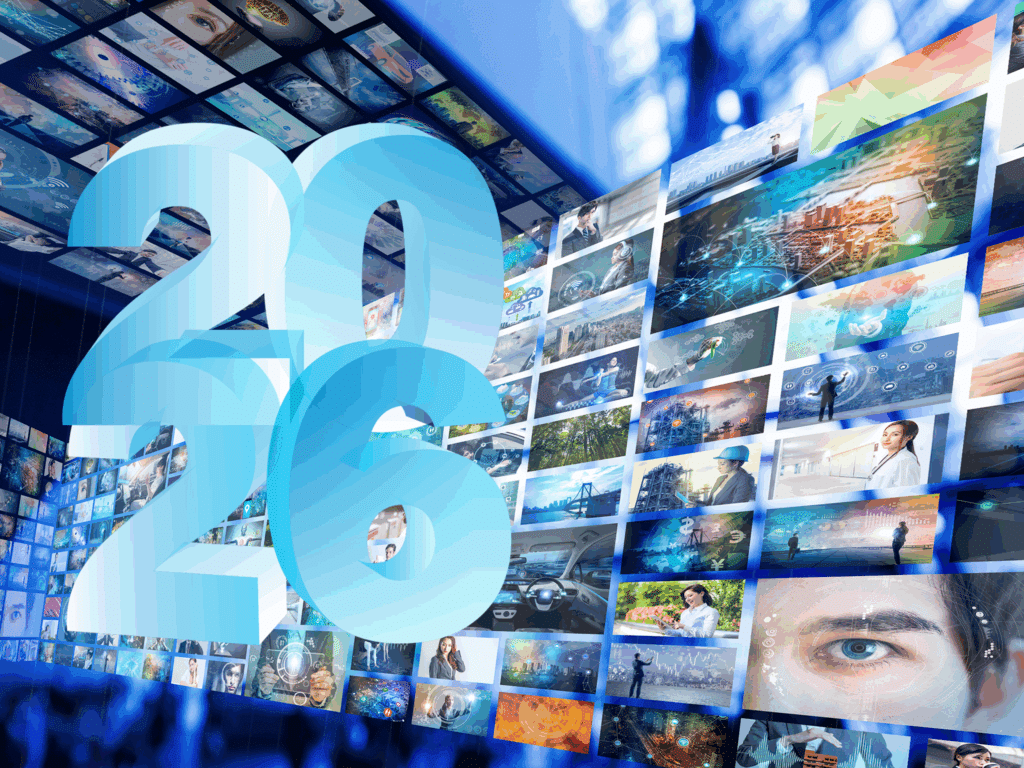Reading Time: 5 minutes
We’re working in an industry that’s constantly changing. Traditional models like print, television, out-of-home, and movies aren’t just declining — consumer expectations are changing, and businesses like yours have to keep up.
The average Internet user sees between 6,000 and 10,000 advertisements per day. You probably already interact with ads regularly, whether they’re on social media feeds, embedded in online articles you’re reading, or when you’re driving down the highway.
But what does this mean for businesses today, looking to promote their brand? Let me walk you through the history of the media ecosystem, and how technology has changed the media industry forever:
What the traditional media ecosystem looks like in action
Let’s say an advertiser like Nike wants to reach you as a consumer. You may already have heard of one of their flagship products, Air Jordans. (I have to admit, they’re pretty cool. My kids are obsessed with them.)
Take this iconic ad they released in 1990, directed by Spike Lee:
Even today’s banner ads still know how to make the Air Jordan’s look cool:

That’s because today, Nike has so much more information available than they did in 1990. They know exactly when one of my kids browses through the latest releases on their site, talks about Air Jordans on public social media, or engages with an existing banner ad.
How they do that is by working with agencies and top media companies to organize what kind of content will resonate with their target audience, figure out where to spend their advertising dollars, and on what channel. They use their mountains of data to their advantage, capitalizing on behavior (my target audience often watches this show, or reads this magazine) and repeatedly showing the Air Jordans in different ways until they become irresistible to purchase.
All of this adds up to today’s media products, what we call inventory. Agencies and companies purchase inventory on a given channel — say, a 30-second spot during a prime time football game, or a click-driven ad on Facebook — exchanging dollars for a chance to influence a member of their target audience to stop thinking about buying and just do it. (See what I did there?)
The 5 different types of media
Here are what the different media types look like, and why you might choose one over another:
- Out of Home (OOH): This is the most simple to execute, especially with non-digital models. This type of advertising includes signage you see as you go about your daily life — in bathrooms at restaurants, on billboards on highways, plastered on buses or subway cars, and in shopping carts at grocery stores. This is all about knowing where your audience will be, and personalizing your creative and copy to their surroundings.
- Linear Television: Traditional television ads rely on different programming slots during live shows. These 10-30 second commercials are measured by airtime (and often scrutinized for creativity) and have increasingly become more expensive. This is still a great channel to target older generations and for special live events like the Super Bowl.
- Print and Magazines: Since the dawn of the printing press, advertisers have taken spots in magazines and newspapers. Print advertising looks different depending on the publication, but the most coveted spots remain the front page and back cover. It’s an older art form, but certainly still used by advertisers today, especially for fashion and retail.
- Radio and Podcasting: If you’ve ever had a catchy jingle stuck in your head, then you’ve been exposed to radio advertising. These short commercials used to form the backbone of radio advertising, but with the rise of podcasting, it’s more likely a brand will sponsor a given show or episode in exchange for shout-outs from the hosts at various intervals.
- Digital advertising: Digital advertising dominates the market, projected to increase to over $400bn in revenue by 2024. Drill down further into digital advertising and it’s one frustrating walled-garden after another. Google, Facebook, and Amazon made up the majority of all digital advertising revenues in 2020, with Google taking the top spot at 28% market share, according to eMarketer.
The media ecosystem has changed forever
Compare digital media’s impressive market share with the dwindling influence of traditional print and media channels like TV (dropping to $150bn), print (dropping to $50bn), or cinema (effectively $0), according to Magna.
We’ve seen a digital revolution, with massive changes in media ownership and consolidation in the last few years. At the same time, there’s a need for companies to move away from a silo-based selling experience to integrate their different platforms.

Today, the average number of data sources media companies have to integrate to run successful advertisements is 23. That’s an astronomical difference compared to a few short years ago.
Platforms, how media is sold, and how media is transacted have gone completely integrated and digital, and this transformation has only accelerated in the wake of the COVID-19 pandemic. We’ve seen a decade’s worth of transformation in the span of the last two years.
Programmatic is the new way of buying media.
Programmatic advertising uses AI and machine learning to automatically purchase media across multiple channels defined by an audience. Advertisers can choose a specific audience segment and target across websites and platforms. This delivers ads to the right people at the right time on the right channel — as opposed to the “spray and pray” model so often used in the past.
How technology has changed the media industry
As the industry moves completely digital-first, businesses need to evolve their IT capabilities.
Salesforce Media Cloud helps you build a converged platform that you own to sell and build integrated media plans: print, linear, and digital, which can now integrate with programmatic exchanges as part of your overall media planning budget.
Built on an industry-specific data model that extends your 360-degree-view of the customer, you’ll access deep analytics and insights for budgeting, projections, actualization, and campaign pacing, with integrations that push data across multiple downstream systems so your team can collaborate and execute seamlessly.
With Salesforce Media Cloud, you can grow revenue with personalized engagement and insights. At Silverline, our deep expertise in the media ecosystem positions us well to help agencies and companies alike revolutionize the way they go about media buying — putting you back in the driver’s seat.




